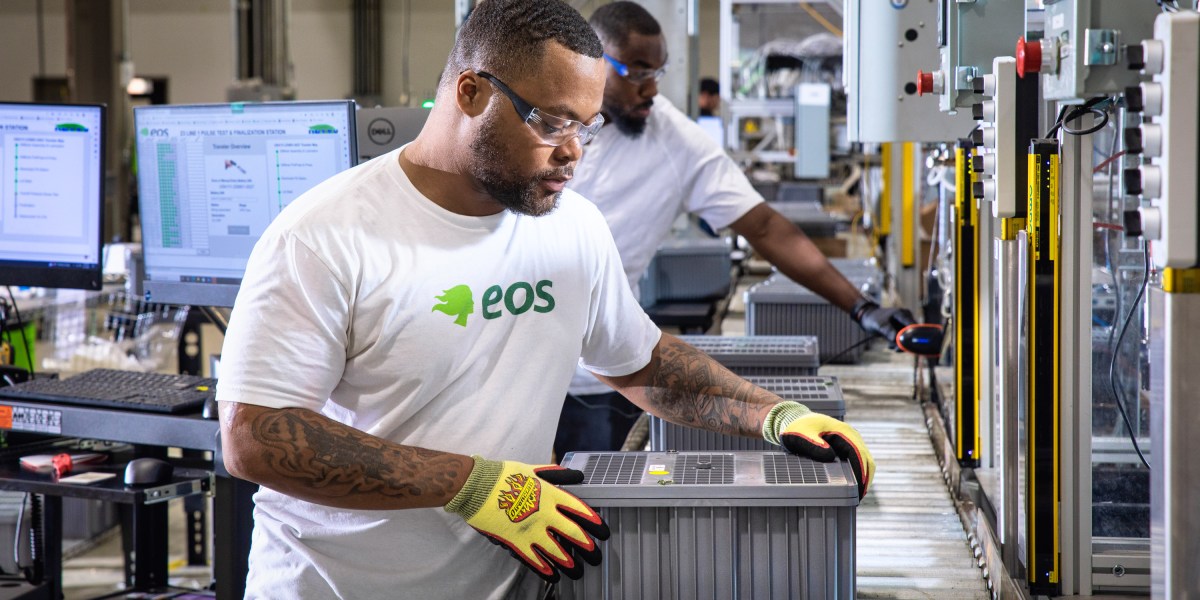The Download: promising new batteries, and how to regulate AI

The news: One of the leading companies offering alternatives to lithium batteries for the grid has just received a nearly $400 million loan from the US Department of Energy. Eos Energy makes zinc-halide batteries, which the firm hopes could one day be used to store renewable energy at a lower cost than is possible with existing lithium-ion batteries.
What they’re made of: Eos’s batteries are primarily made from zinc, the fourth most produced metal in the world, and use a water-based electrolyte (the liquid that moves charge around in a battery) instead of organic solvent. This makes them more stable than lithium-ion cells, and means they won’t catch fire.
Why it matters: While the cost of lithium-ion batteries has plummeted over the past decade, there’s a growing need for even cheaper options. The zinc-based technology Eos hopes to commercialize could store electricity for hours or even days at low cost. Read the full story.
—Casey Crownhart
How water could make safer batteries
Batteries’ electrolytes dictate a lot about how they work, as well as how safe they are. A growing number of alternative battery makers are turning to an interesting ingredient to use in their electrolyte to lower the risk of them catching fire: water.
Casey has dug further into the fascinating technology behind alternative batteries in the latest edition of The Spark, her weekly climate newsletter. Sign up to receive it in your inbox every Wednesday.
How should we regulate AI?



